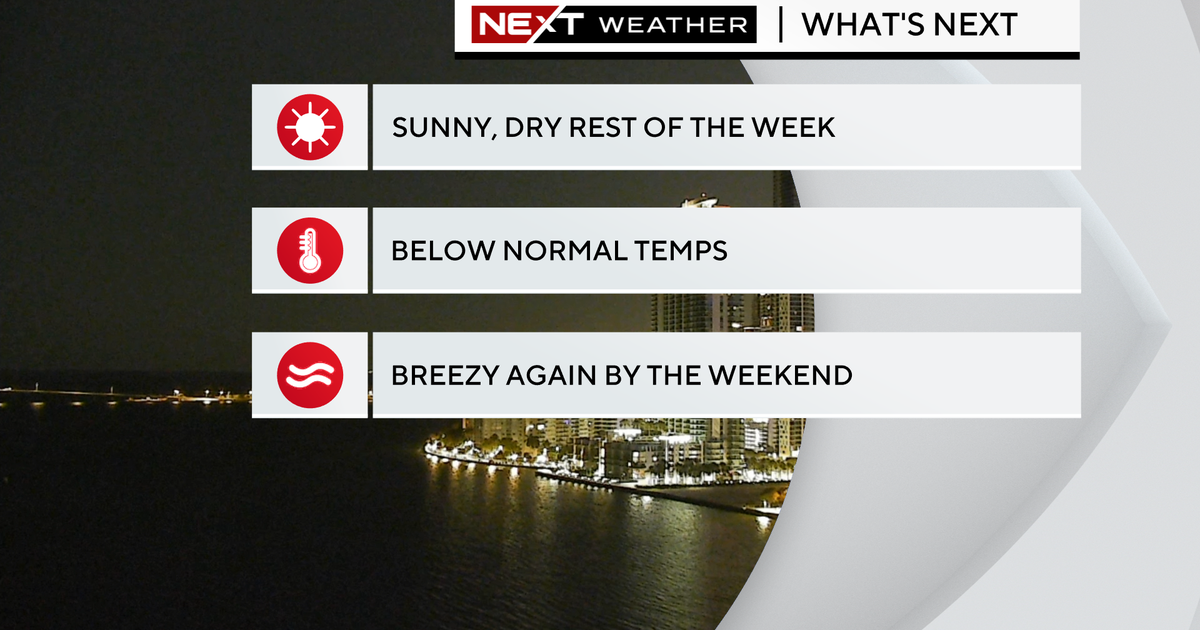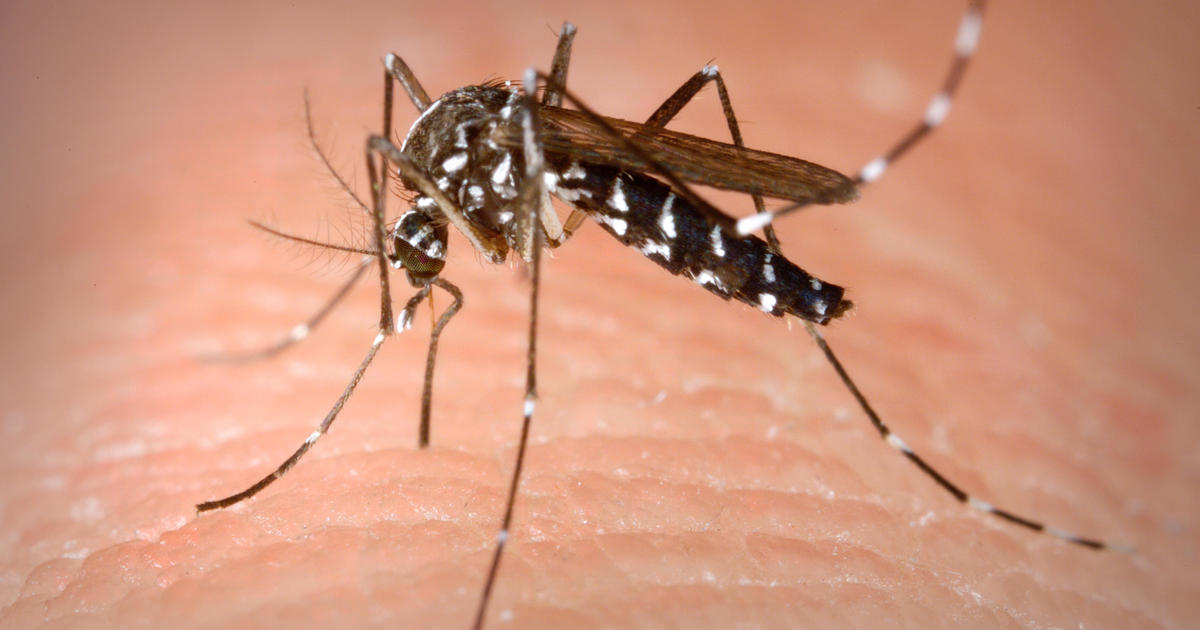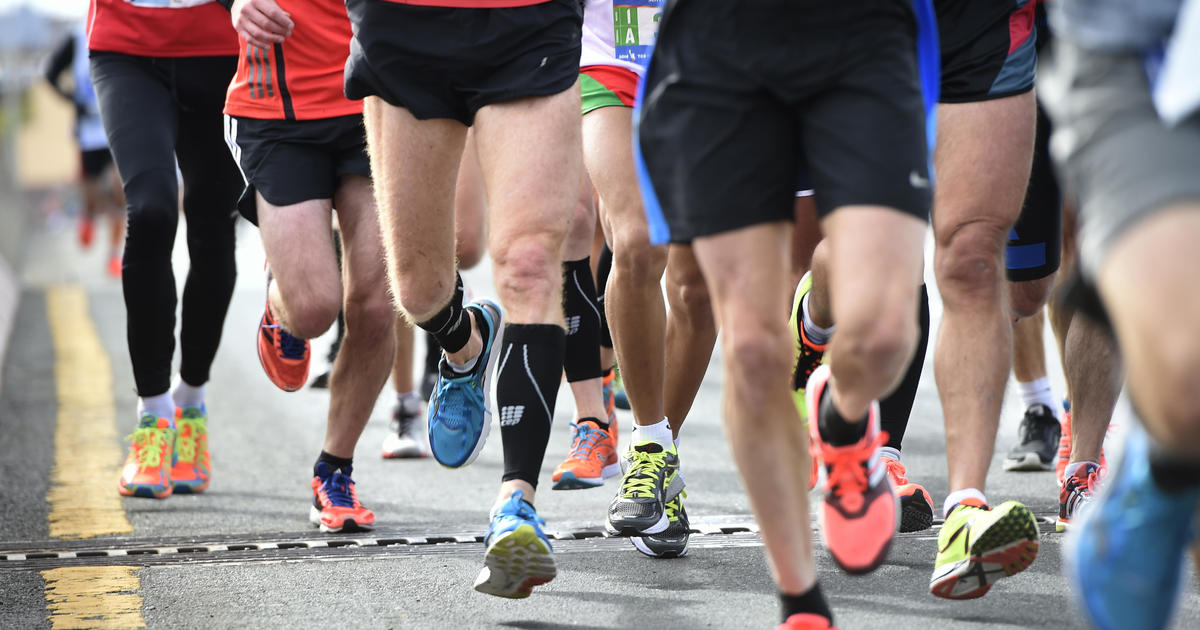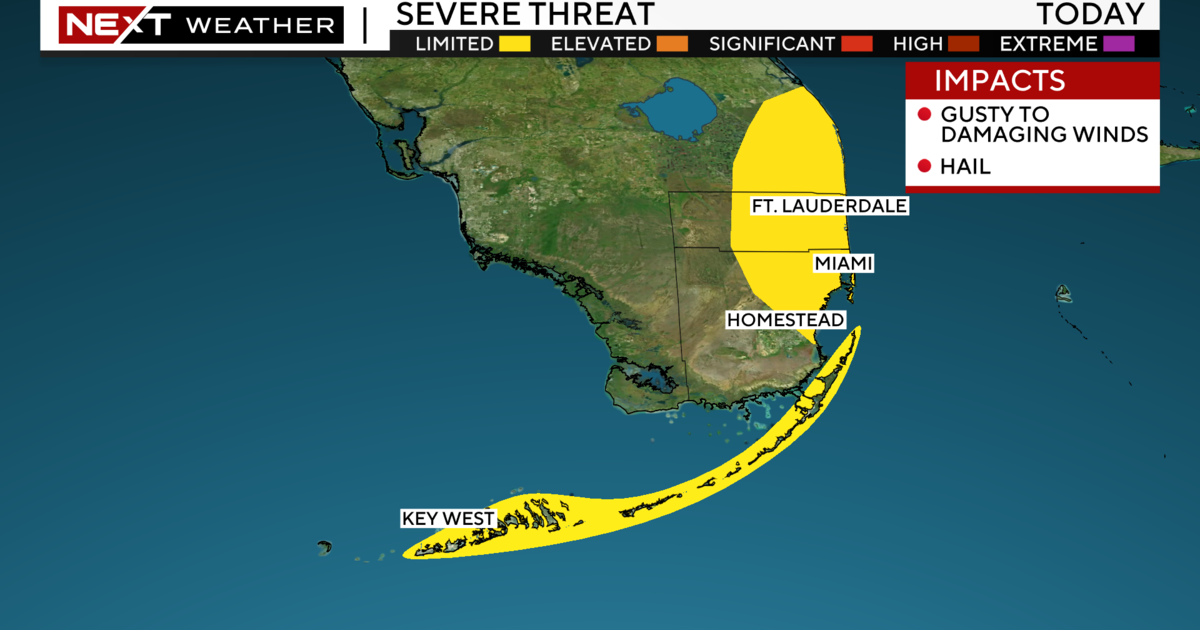Summer Brings "Feels Like" Temps In The Triple Digits
Follow CBSMIAMI.COM: Facebook | Twitter
MIAMI (CBSMiami) - Summer in South Florida is hot, hot, hot.
Perhaps even too hot.
Our Summer heat, combined with the humidity, can get in the way of the body's cooling system. This combination of heat and humidity is represented in the heat index.
Once the temperature climbs above 90° and the humidity is high, the heat index value starts to increase rapidly. It is not uncommon to see heat index values approach 100° or even go as high as 105°. In rare cases, heat index values can be as high as 110° which result in heat advisories and excessive heat warnings.
Although the numbers are not expected to climb that on Thursday, factors are in place which will lead to extended periods of heat index values at or above 100° which can still pose a hazard to those who don't take precautions.
While the area heats up on a daily basis, showers and storms typically develop as relatively cooler air is drawn in from the ocean. This natural air conditioning is not much but does often drop the temperatures just enough to lower that heat index back below 100°. These showers and storms are almost a daily occurrence but not guaranteed. Delay those a bit or remove them entirely from the equation and the heat index can easily climb into triple digits and stay there for a while.
Saharan dust has been overhead the past few days which can not only dry the atmosphere out but also limit, or even prevent, showers and storms from developing. The last few days this has been the case here in South Florida leading to limited showers and storms which develop later in the day.
In addition to the drier air, a southwest breeze has developed which makes it harder for that Atlantic sea breeze to push through the area and potentially trigger a few showers and storms. Although the dust and breeze will not eliminate our daily showers and storms, they will delay them a few hours which will give the heat index a chance to break 100° and stay there a while.
The peak heat index occurs between 11 a.m and 3 or 4 p.m. when showers and storms should develop. If you have to do any prolonged work outside it is better to do it early or later, provided there are no storms around. If that can't be avoided then make sure you drink plenty of fluids, take frequent breaks, and know the signs of heat related illnesses. Heavy sweating, nausea, tiredness, and cramps are all signs that you may be suffering from heat exhaustion which may lead to heat stroke and need to cool down.



